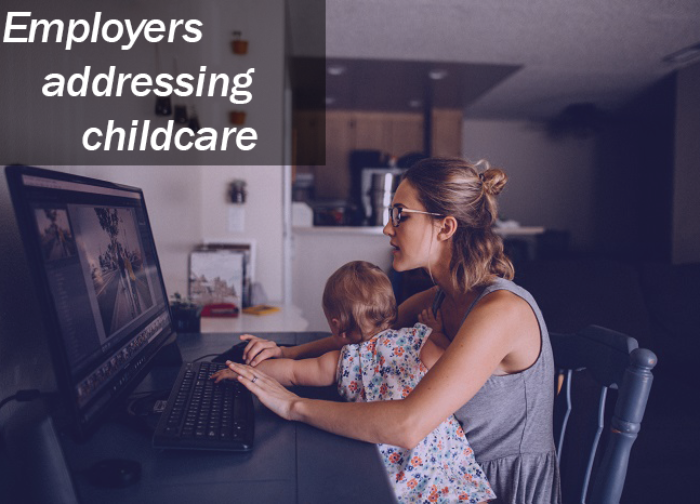At HCM provider Paylocity, one-third of the workforce has children ages 12 and under.
It’s a population that has been particularly hard hit by the coronavirus pandemic, as working parents struggle to adjust to the new realities of remote or hybrid work, all while providing childcare and, in many cases, home-schooling. The challenges are reaching a fevered pitch, as scores of schools across the nation are cancelling in-person classes this fall.
“The idea of working from home while also helping your kids with online learning or taking care of younger kids without childcare help … these parents are definitely struggling,” says Paylocity CEO Steve Beauchamp.
Despite the obstacles working parents are confronting, this demographic shouldn’t be looked at as a monolith, Beauchamp notes. Each situation is different, and thus, requires a different type of employer support.
For instance, parents with young children are managing meal and naptimes, while those with older kids have to lead their virtual schooling, and some employees also have parents or other older adults living with them that require care, he notes. To account for that diversity, employers should boil down their support strategies to one primary focus: flexibility.
Related: The childcare crisis is here. What are you doing about it?
Paylocity is in the process of rolling out a “menu of options” to help employees–nearly all of whom have been working remotely since March–to manage the work/life integration. Plans that could be considered include split schedules, such as a several-hour break in the middle of the day for caregiving; a four-day week with 10 hours; swapping a weekday for working on a weekend day; and reduced hours until schools resume in-person operations.

“Each individual circumstance is different,” Beauchamp says. “There are single parents, parents who have a partner working in an office or others who are essential workers, people whose partners have different schedules. Everybody’s personal scenario drives the flexibility they’re going to need.”
Figuring out which options to put on the table should start with a “real, open and transparent conversation” with employees to determine their unique needs, he says, noting that Paylocity is currently surveying employees about arrangements that could ease their at-home burdens.
Global IT and software development company Globant also is rolling out an employee survey, specifically to understand household composition and the ages of workers’ children to determine how the organization can best support them, says Chief Talent and Diversity Officer Mercedes MacPherson.
“We’re trying to really understand the level of support people have at home,” MacPherson says. “There may be some mothers with several kids who require a lot of attention, some who need to be helping teach them, as well as some fathers who might be taking care of the kids by themselves. So we really need to understand our population and all of the differences that exist.”
Globant does have one important metric already. This spring, the organization polled its workforce about the shift to remote working and found that 90% were satisfied with how their work-from-home situation was going. The 10% who weren’t doing as well? Parents with young children and those living with older adults who were concerned about their health, MacPherson says.
To support those employees, Globant is leveraging its Globant 4 You initiative, a multipronged program designed to encourage holistic wellness. Offerings include online fitness classes, yoga and meditation sessions, information about the 24/7 EAP resources, specifically related to family issues, financial concerns and more. Earlier this summer, the organization launched a series of virtual discussions about parenting through the pandemic. Globant 4 You also takes into account whole family wellness; the Globant Together effort features a series of virtual events around music, art and cooking that are designed for both employees and their families.
The initiative will continue to develop organically, MacPherson says, as the pandemic, and concurrently, employee needs evolve. Like Paylocity, Globant is embedding flexibility in how it approaches employee policies, seeking to empower workers to be transparent about reducing their hours or creating new schedules, she says.
Beauchamp notes that ensuring employees are aware of the support programs in place and the organization’s willingness to be flexible can curb the potential for high turnover, which is expected to have a disproportionate impact on women.
“That’s one of the reasons we’re really trying to get ahead of this,” Beauchamp says. “When people don’t know what accommodations might be available to them, they could feel trapped and like there’s no alternative but to leave. So if they know, ‘Here’s three or four different ways you can work less hours or change your schedule,’ they might be able to find ways to stay.”




